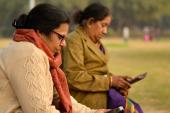Socioeconomics Mire Access to All AVR Options for Aortic Stenosis
TAVI and SAVR, but not CABG, rates are disproportionately low in zip codes with a high area deprivation index.

Socioeconomic disparities in access to care exist for patients receiving TAVI but also notably SAVR, according to data highlighting a known but ongoing problem in aortic stenosis treatment pathways.
The study also showed zip code-level inequities in access to laparoscopic colectomy as a comparator, indicating that these trends are likely not device- or procedure-specific. However, CABG—a much more common surgery—was not associated with any inequalities in access by socioeconomic status.
“We were surprised by how the large expansion in TAVR volumes didn't really translate to a comparative reduction in disparities,” study co-author Alon Bergman, PhD (University of Pennsylvania, Philadelphia), told TCTMD. “Over time, the differences in TAVR utilization between socially disadvantaged areas and those that were not actually grew. So, in the case of TAVR, increased adoption of the procedure really didn't go hand in hand with reduction in disparities, but actually aggravated these.”
Previous studies have shown similar findings, including one study in women and minorities in England and another using the Society of Thoracic Surgeons/American College of Cardiology TVT Registry. Some have attributed reduced TAVI access to limitations during its early days to institutions and operators that met certain volume thresholds, but its availability has spread in recent years.
Commenting on the study for TCTMD, Tsuyoshi Kaneko, MD (Washington University School of Medicine in St. Louis, MO), said he was not surprised to see inequity in TAVI, but did find the SAVR disparities unexpected. “Aortic stenosis, in general, is underdiagnosed and undertreated,” he said. “This problem is real, and they emphasize that. There is a significant contrast [with] CABG, which is a more common surgery. I think people have tackled it. And now we have to treat TAVR and SAVR in a similar fashion to make sure that these are spread around.”
ADI Association
For the study, published online this month in the Journal of the American Heart Association, Guy David, PhD (University of Pennsylvania), Bergman, and colleagues include procedure volume data on more than 25,000 patients from the Healthcare Cost and Utilization Project from 18 states between 2016 and 2019. They also analyzed area deprivation index (ADI) data, which indicates zip code-level socioeconomic distress.
In general, they found the rate of TAVI procedures increased across all zip codes throughout the study period. However, socioeconomically affluent areas with lower ADIs were associated with statistically significant disproportionately large shares of SAVR, TAVI, and laparoscopic colectomy procedures relative to all hospitalizations in the sample group. Notably, this was not the case with CABG, where the cumulative distribution of these surgeries was about equivalent to the share of total hospitalizations, suggesting equity.
When the analysis was limited to patients ages 80 and older, high ADI areas had a lower prevalence of TAVI but not SAVR, laparoscopic colectomy, or CABG.
Laparoscopic colectomy has been an alternative to open colectomy for more than two decades, making it a good comparator for looking at SAVR and TAVI outcomes, according to Bergman. “Our results for laparoscopic colectomy show that inequity and access problems exist even years after introduction of a procedure and show that time doesn't really heal all wounds when it comes to reducing health disparities,” he said. “I really expected over time by itself that these disparities might resolve themselves.”
Additionally, Bergman said he was “surprised by how the access gap for TAVR was even more pronounced when we looked at the population over 80 years old. This is particularly concerning as this is the population that is most favored for TAVR procedures.”
Barriers and Solutions
One of the primary barriers to better distributed aortic stenosis care in the US is hospital availability, according to Bergman. “AVR has a smaller footprint in terms of the number of hospitals that it is performed in compared to CABG,” he said. “That smaller footprint by itself has several explanations, including government policy, the high start-up cost of a TAVR program, and of course, the scarcity of surgeon expertise.”
Other mechanisms at play likely include transportation cost, health literacy, and provider bias, Bergman added. “But it's also important to note that these mechanisms should have some effect on CABG access as well. We think that the culprits are more mechanisms that have a larger effect on AVR access than CABG. It needs to be something more specific towards the procedure.”
Bergman said his team intends to continue this research to “identify and to measure the channels through which this inequity is generated. Only with this information in hand can we begin designing targeted solutions that are really aimed at improving equitable access to care.”
Kaneko, too, said he is unsure about what should be done to remedy the procedural inequities, “but it has to be done in a multifactorial way.” First, he said education of primary care physicians and general cardiologists about the critical nature of aortic stenosis is imperative. In terms of improving access to procedures, he said he would like to see network centers opened up at institutions that already are performing coronary access surgeries as opposed to focusing on building regional centers of excellence.
Additionally, while the zip code-level data are informative, Kaneko said he would like to see artificial intelligence algorithms harnessed to perform even more targeted research looking at “specific households and also specific societies and communities.” This is important, he said, because “I don’t think the zip codes that show the same income in the state of New York versus Arkansas are the same. There has to be a little more granular study.”
This kind of information will enable better design of solutions, Kaneko said. “We now know that we have a problem, but these [studies] are more hypothesis-generating. We haven't gotten to the point where we can solve it because I don't think we identified the problem specifically enough.”
Yael L. Maxwell is Senior Medical Journalist for TCTMD and Section Editor of TCTMD's Fellows Forum. She served as the inaugural…
Read Full BioSources
David G, Bergman A, Gunnarsson C, et al. Limited access to aortic valve procedures in socioeconomically disadvantaged areas. J Am Heart Assoc. 2024;13:e030569.
Disclosures
- The study was supported by Edwards Lifesciences.
- Bergman reports receiving consultancy fees from Edwards Lifesciences.
- Kaneko reports no relevant conflicts of interest.





Comments